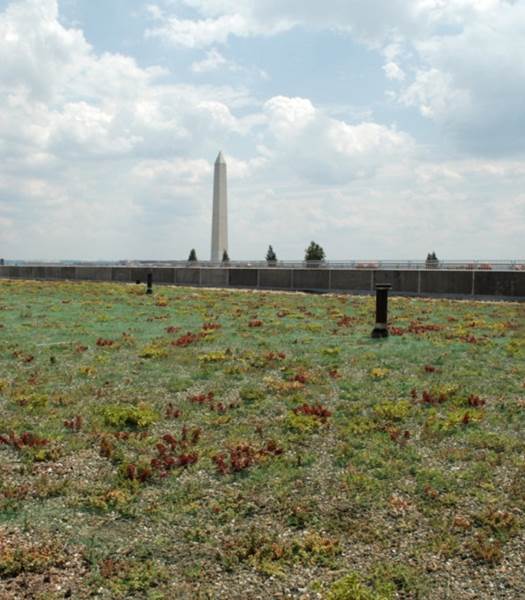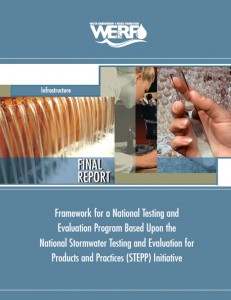In July, the National Stormwater Testing and Evaluation for Products and Practices (STEPP) initiative crossed a milestone with the release of a document that provides recommendations on potential program design components. The document, Framework for a National Testing and Evaluation Program Based Upon the National Stormwater Testing and Evaluation for Products and Practices (STEPP) Initiative (Project No. INFR2R14), also addresses both general programmatic and individual program aspects.
WEF, through the Stormwater Institute, assembled the Advisory Committee and Research Team that worked on this project and managed the development of the framework report.
Framework creators and recommendations
The Advisory Committee created the framework document. The Advisory Committee includes
- Robert Adair, Convergent Water Technologies
- Andrew Allan, Stormwater Australia
- Julia Anastasio, Association of Clean Water Administrators
- Gary Belan, American Rivers
- Jason Berner, U.S. Environmental Protection Agency, Office of Science and Technology, Office of Water
- Todd Doley, U.S. Environmental Protection Agency, Office of Science and Technology, Office of Water
- Chris French, Water Environment Federation (formerly with Contech Engineered Solutions LLC and representing the Stormwater Equipment Manufacturers Association)
- James Houle, University of New Hampshire
- Doug Howie, Washington State Department of Ecology
- Ryan Janoch, P.E., Mapistry
- Glenn MacMillan, Toronto and Region Conservation
- Richard Magee, Sc.D., P.E., New Jersey Corporation for Advanced Technology
- Robert Roseen, Ph.D., P.E., Waterstone Engineering, PLLC (formerly with Horsley Witten Group)
- David Sample, Ph.D., P.E., Virginia Polytechnic Institute and State University
- Alex Sandu, Ph.D., P.E., MWH Global
- Larry Schaffner, Thurston County (Wash.) Water Resources
Chapter No. 4 of the framework provides details on a suggested three-step process to establish the National STEPP Program. The first stage is the continued operations of the STEPP Advisory Committee; the second stage is the startup period of the National STEPP Program; and the third stage is the established program operations.
The first step and second steps are expected to take 6 to 9 months and 24 months, respectively. Both steps — leading to the third step, the sustained operation of the STEPP Program — will involve much interaction with existing state-level programs.
The full framework document, Framework for a National Testing and Evaluation Program Based Upon the National Stormwater Testing and Evaluation for Products and Practices (STEPP) Initiative (Project No. INFR2R14), can be downloaded free of charge from the Water Environment & Reuse Foundation website.
The need for STEPP
The STEPP initiative seeks to fill the void of the lack of a national stormwater control measure (SCM) testing and verification program. In the absence of national leadership, a number of independent state and local government led initiatives with inconsistent test protocols and data analysis techniques developed over the past 15 years to verify innovative SCMs. To meet the sector’s needs, WEF began by convening a meeting of interested parties at WEFTEC 2012. Participants stated that the lack of a national program to test and evaluate practices limits innovation of emerging technologies. The participants then formed the core of a workgroup referred to as the Stormwater Testing and Evaluation for Products and Practices (STEPP) Workgroup. In addition, a steering committee of 10 members and a chair investigated this topic and produced a white paper articulating the issues and developing recommendations and next steps
The underlying information
On Feb. 6, 2014, STEPP released a white paper recommending the formation of a national testing and evaluation program for stormwater products and practices. The goal of a national program would be to meet the growing need for affordable and effective stormwater management infrastructure and to overcome the hurdles in the sector that restrains innovation in stormwater product and practice technology development.
The paper, Investigation into the Feasibility of a National Testing and Evaluation Program for Stormwater Products and Practices, discusses challenges and possible solutions. Challenges mentioned include consistency in protocols, programmatic variability, lab versus field testing, sustainable funding, product and practice categorization, and the need for leadership. The white paper reflects concerns of manufacturers, municipalities, consulting engineers, government, non-governmental organizations, and WEF.







